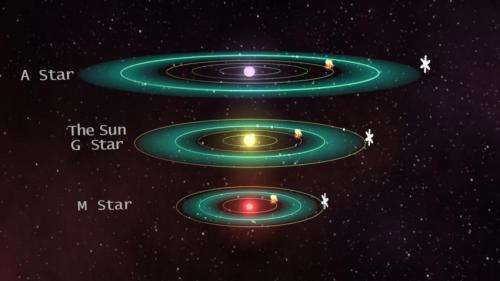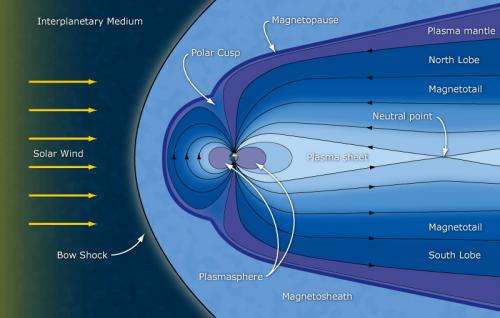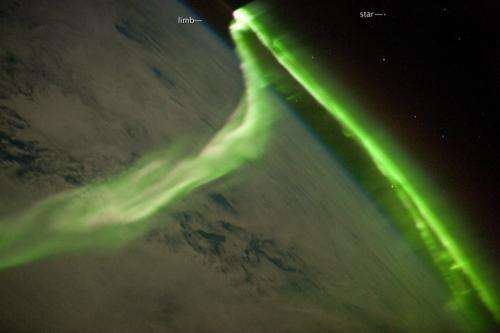Red dwarf planets face hostile space weather within habitable zone

Red dwarfs comprise about 80 percent of the stars in the Universe, but their habitable zone—the distance from a star where liquid water may pool on the surface of the planet—is far more hostile than scientists have hoped.
The current search for extraterrestrial life is largely targeted on the rocky planets orbiting red dwarf stars—smaller and dimmer than our yellow dwarf sun.
Many planets, and at least one Earth-size planet, have recently been pinpointed within habitable zones of red dwarfs via NASA's Kepler Mission.
But a study published last week demonstrates the standards for habitation are far more complex than moderate surface temperatures and abundance of liquid water.
"A red dwarf planet faces an extreme space environment, in addition to other stresses like tidal locking," says Ofer Cohen, lead author and astrophysicist of the Harvard Smithsonian Center for Astrophysics (CfA)
Because red dwarfs are so dim and cool, a planet must exist in very close proximity to it in order to obtain adequate energy to harbor life. A planet would have to be much nearer than the Earth is to the Sun, nearer even than Mercury. This would subject it to extreme space weather due to the intense pressure of the stellar wind – a continuous flow of charged particles that is streaming from the star in all directions. The intense stellar wind at close distances is capable of stripping surrounding planets of their atmospheres.
The Earth very rarely feels the impact of space weather due to its strong magnetic field. This invisible field envelops the Earth, deflecting charged particles away from it, in a fashion quite similar to the force shields depicted on Star Trek's Starship Enterprise.

"The space environment of close-in exoplanets is much more extreme than what the Earth faces," explains co-author Jeremy Drake (CfA).
Cohen and his team used a three-dimensional numerical model, which was developed at the University of Michigan to visualize the orbit of three known red dwarf planets around a simulated middle-aged red dwarf star. The study demonstrated the close proximity would strip the red dwarf planets of their atmospheres and consequently their water supply over time, even with a magnetic field as strong as the Earth's.
"Red dwarfs are more faint than the Sun, but they are actually more active magnetically and their x-ray and EUV luminosities comparing to the bulk luminosity are higher than the Sun," Cohen told Astrobio. "We expect planets in the habitable zone of red dwarfs to suffer from intense EUV/X-ray radiation."

Even the Earth's magnetic "force shield" is not entirely impervious to effects of space weather. Particularly forceful solar flares or coronal mass ejections can disable satellites and shut down power grids. More benignly, deflected particles can get caught in the atmosphere of the North or South Poles to create stunning displays of neon light as they react with Oxygen and Nitrogren—the Aurora.
Aurorae on a red dwarf would be 100,000 times stronger than here on Earth. "If Earth were orbiting a red dwarf, then people in Boston would get to see the Northern Lights every night," says Cohen.

Although the environment of Red Dwarf planets would be too hostile to sustain human life, extremophiles— hardy organisms capable of thriving in extremely hostile environments— could be a possibility.
"I personally believe that it is naïve to expect life in the Universe to be exactly as on the Earth," Cohen told Astrobio. "Even in our own planet we found life in places we did not expect them to be. My scenario predicts that these planets may not sustain an atmosphere, but can there be some underground life beneath the surface?"
Provided by Astrobio.net




















